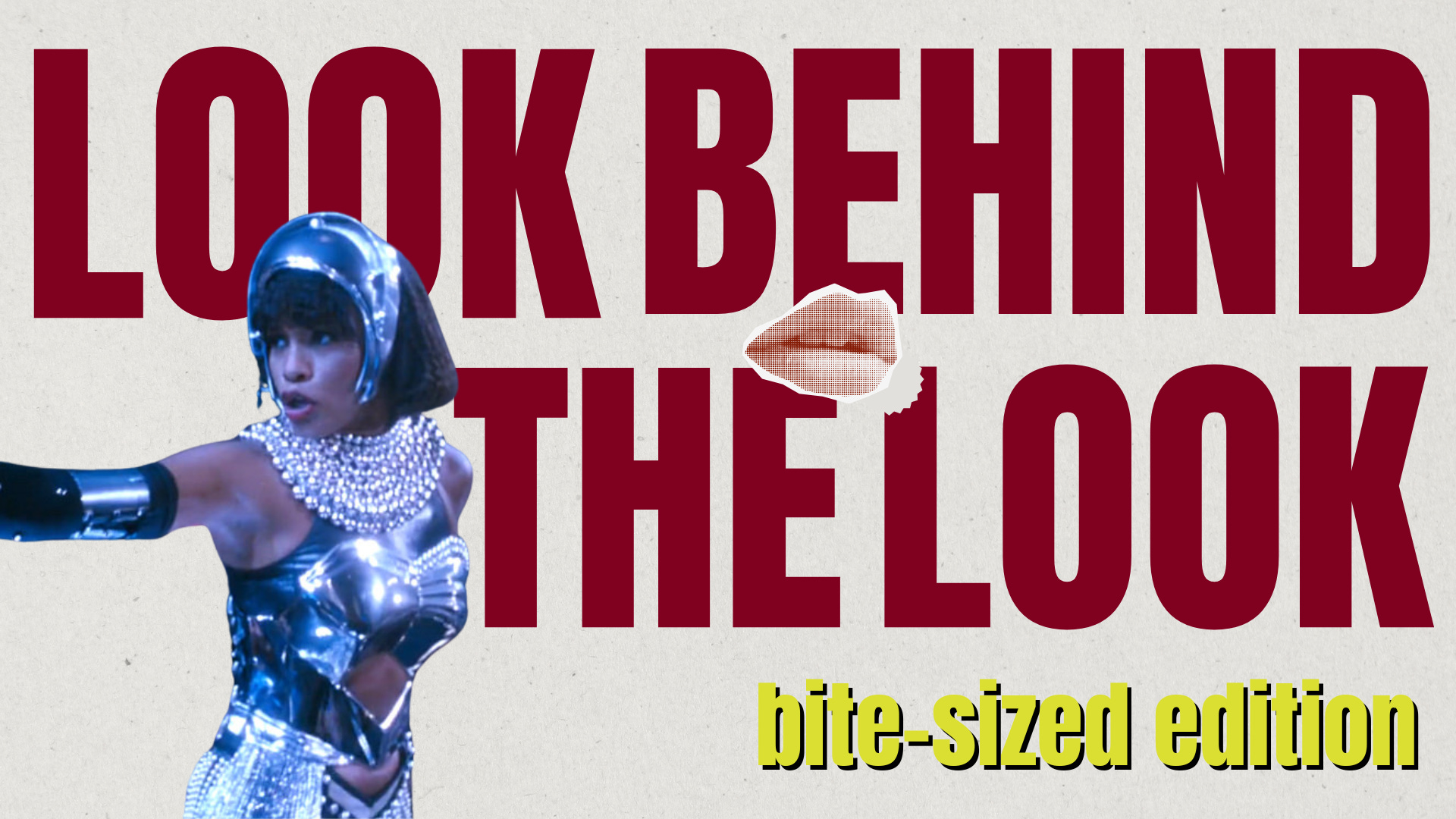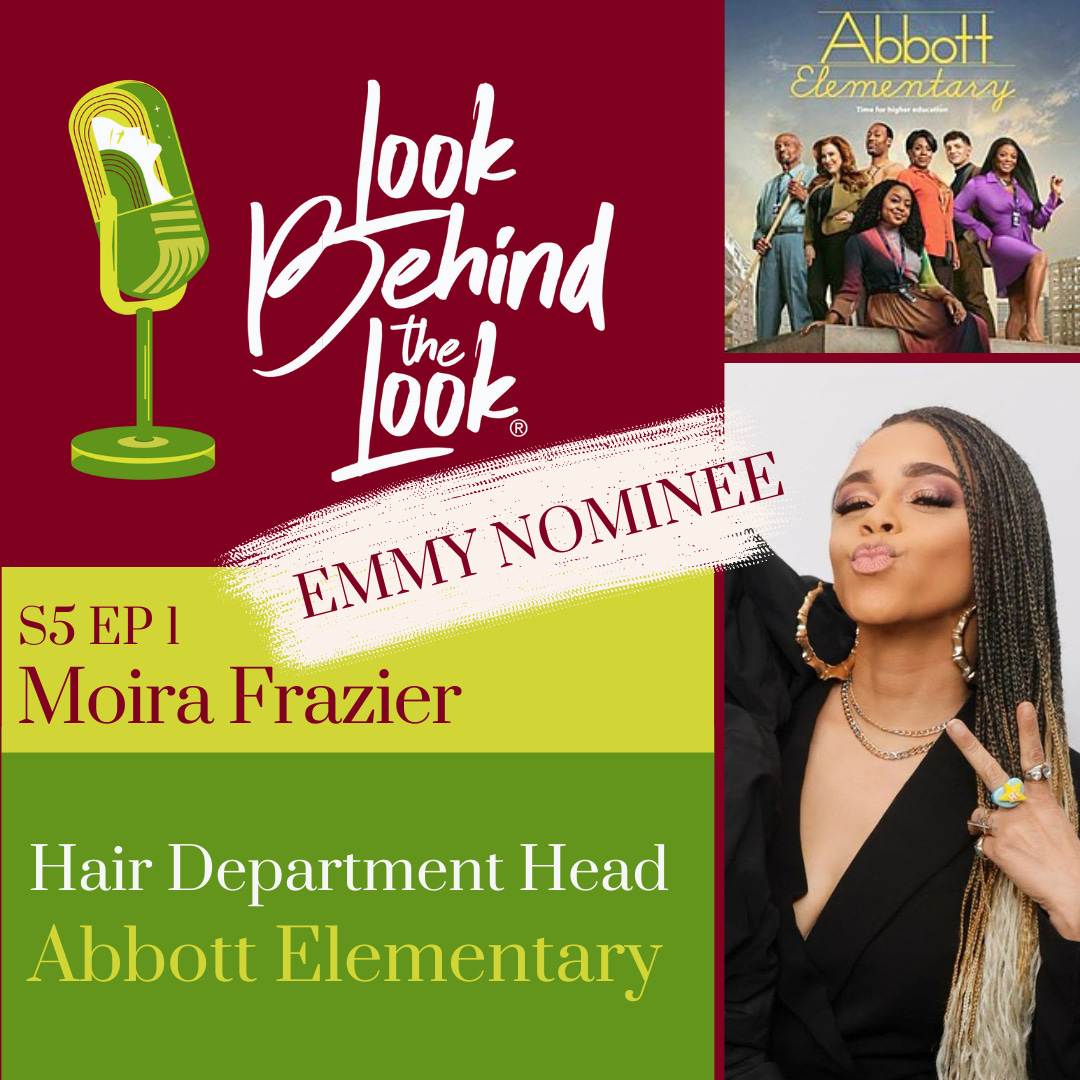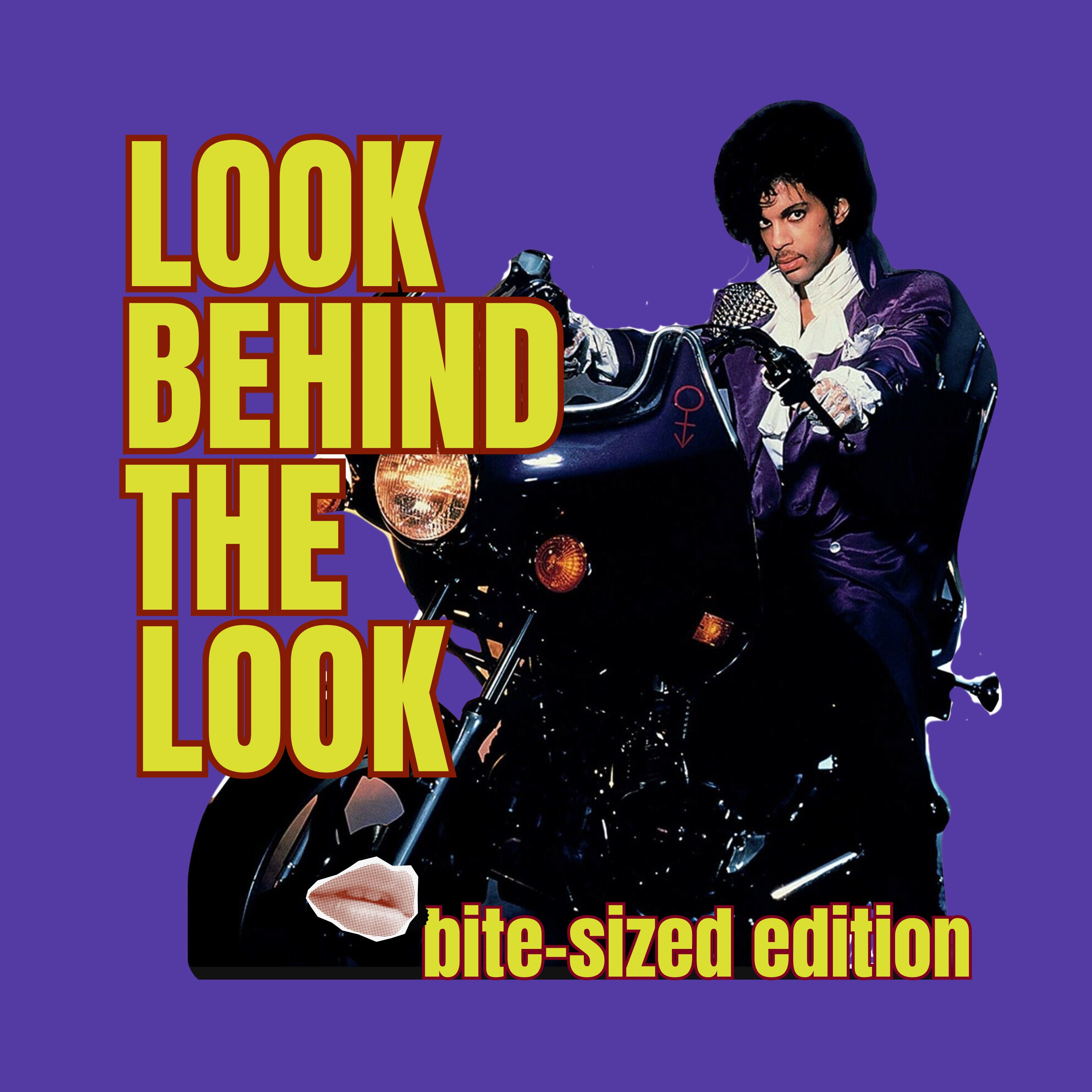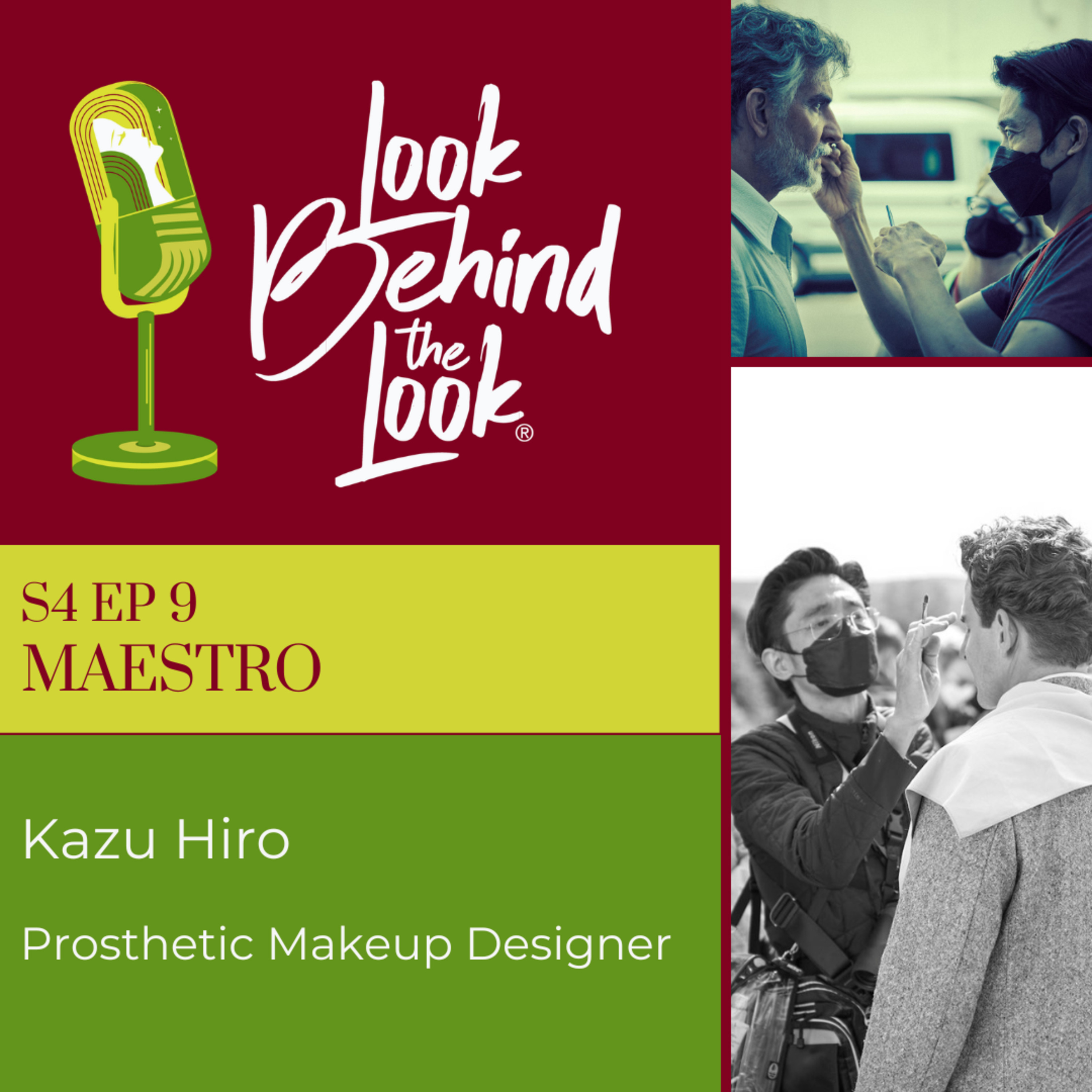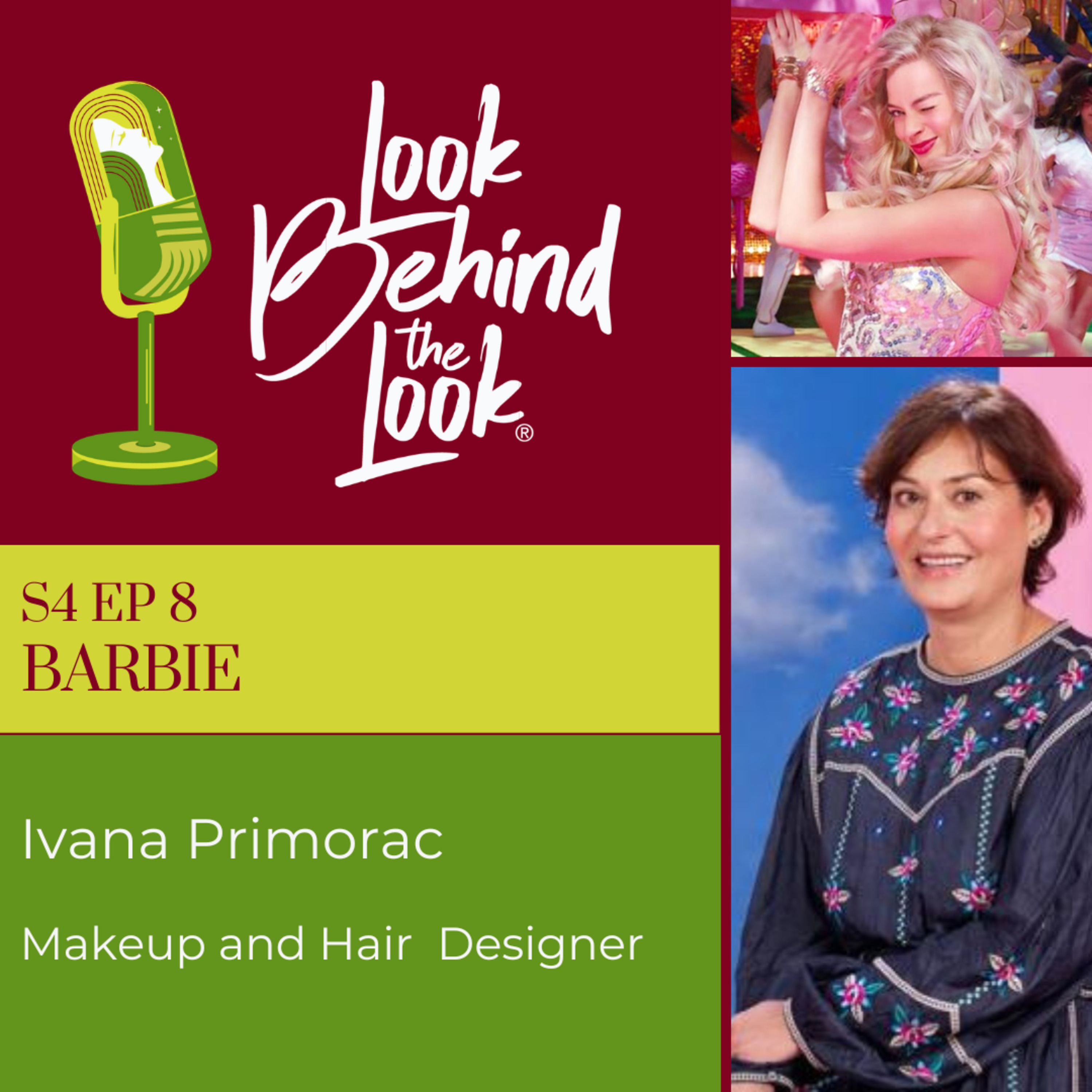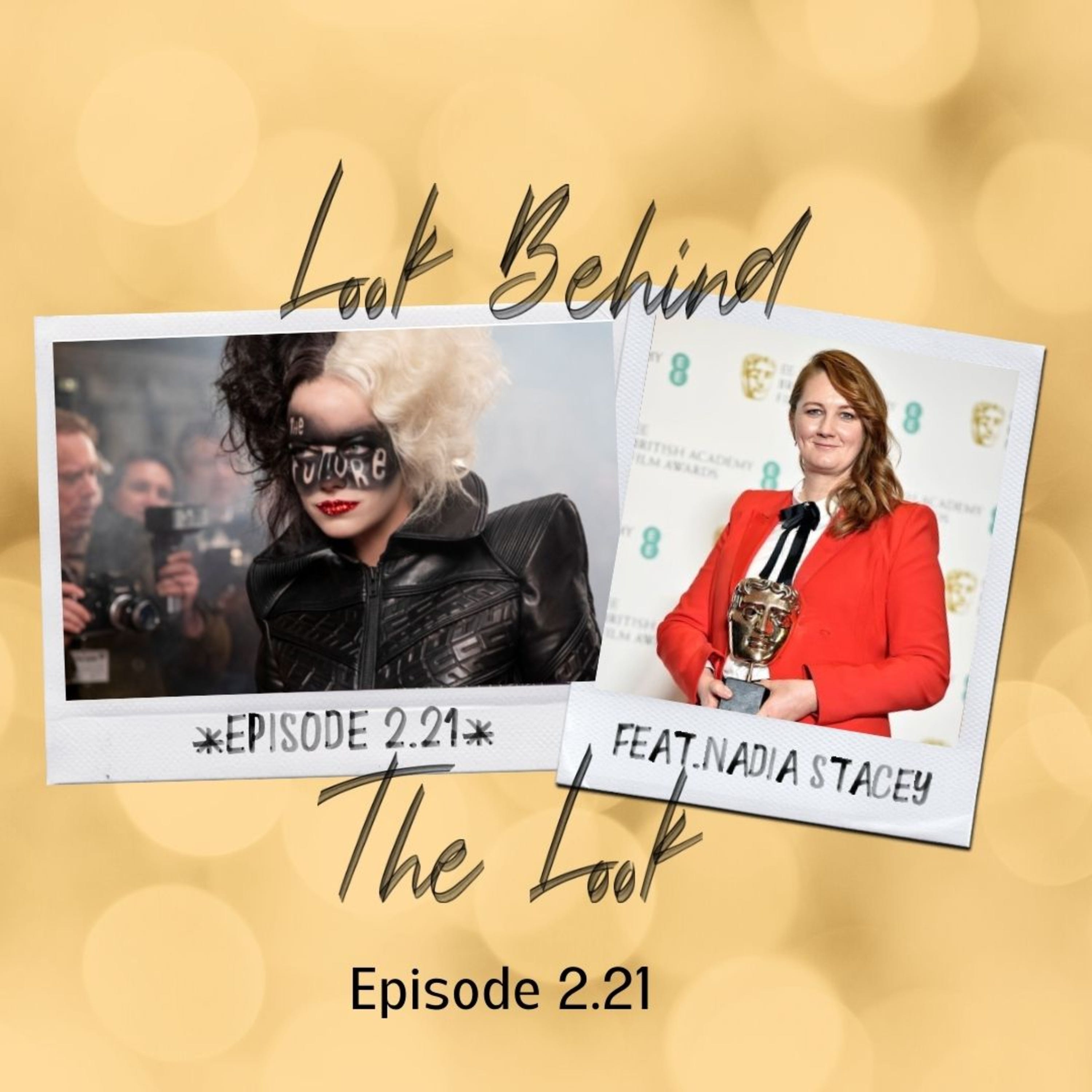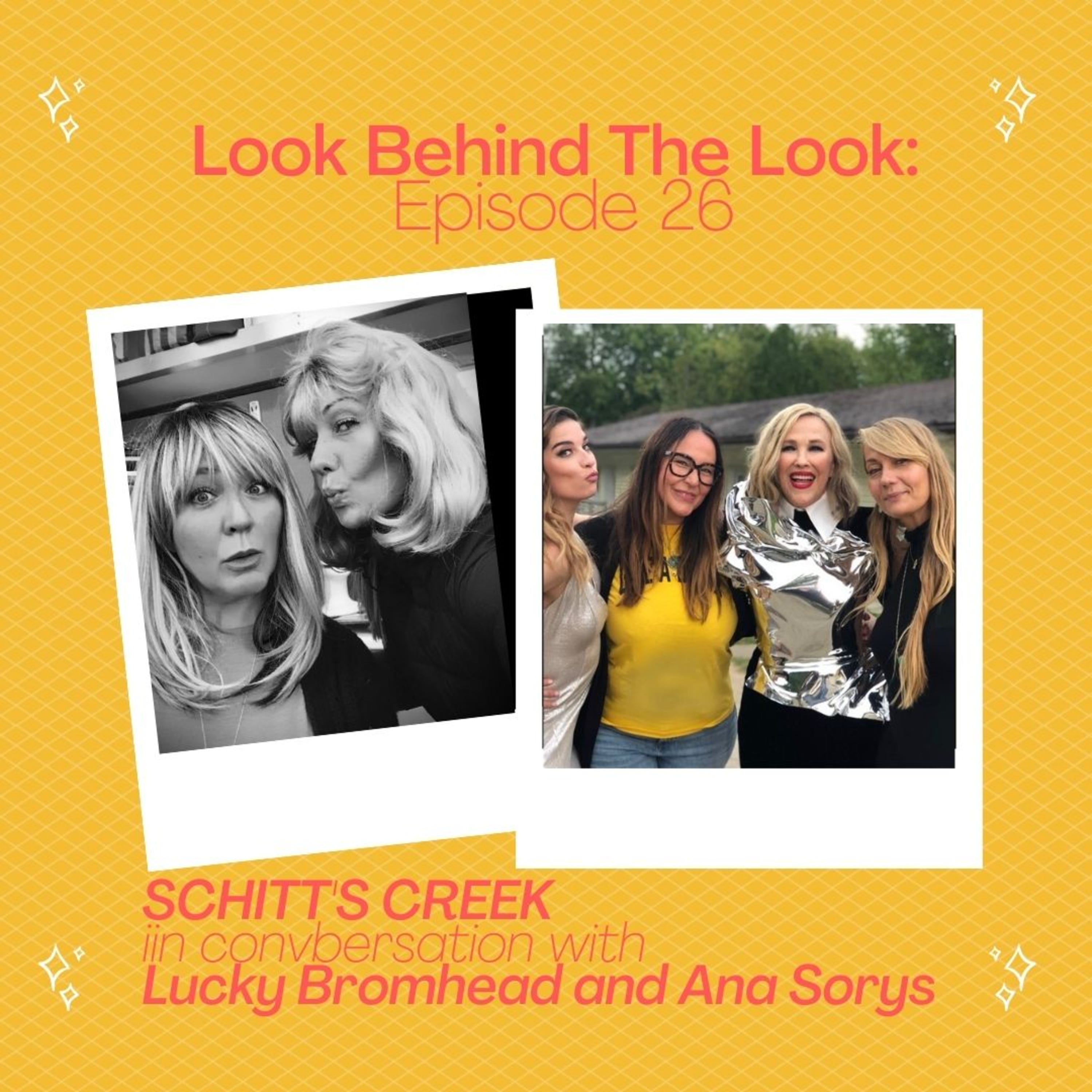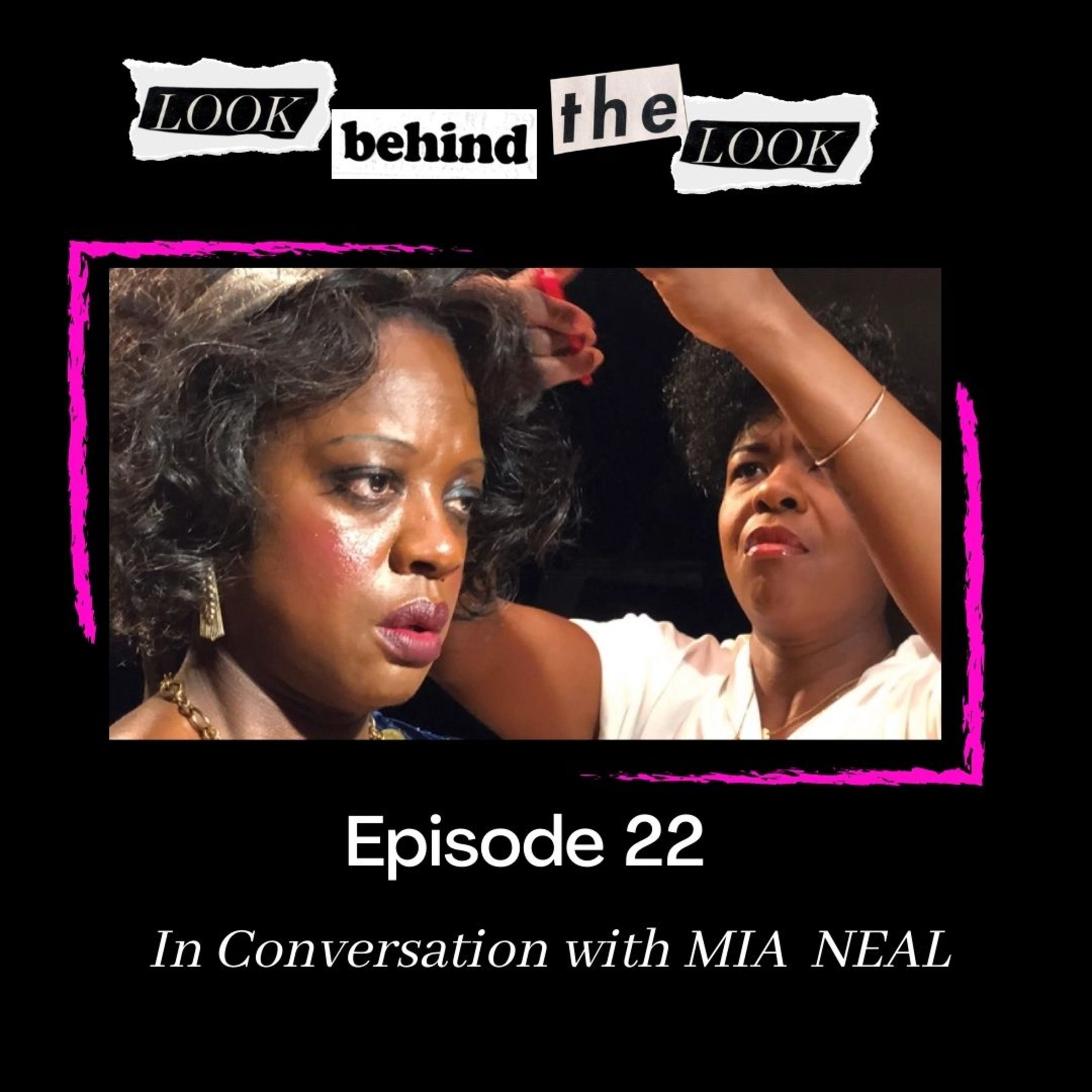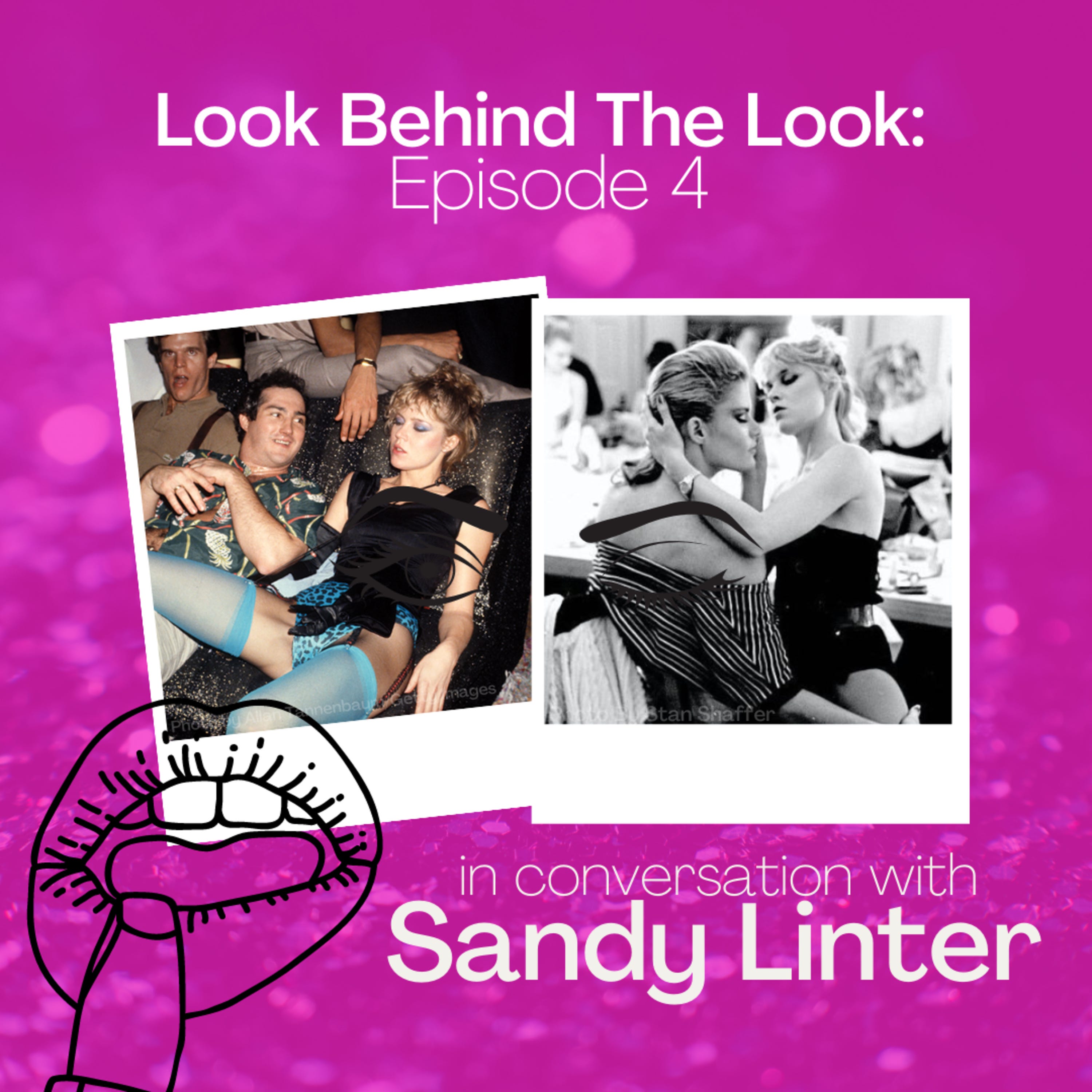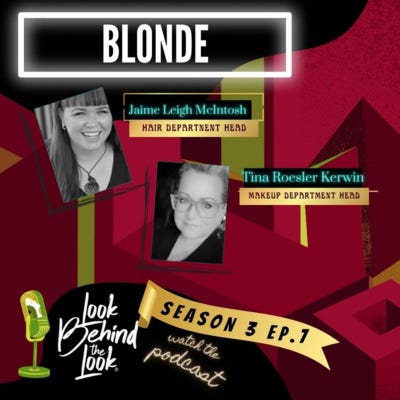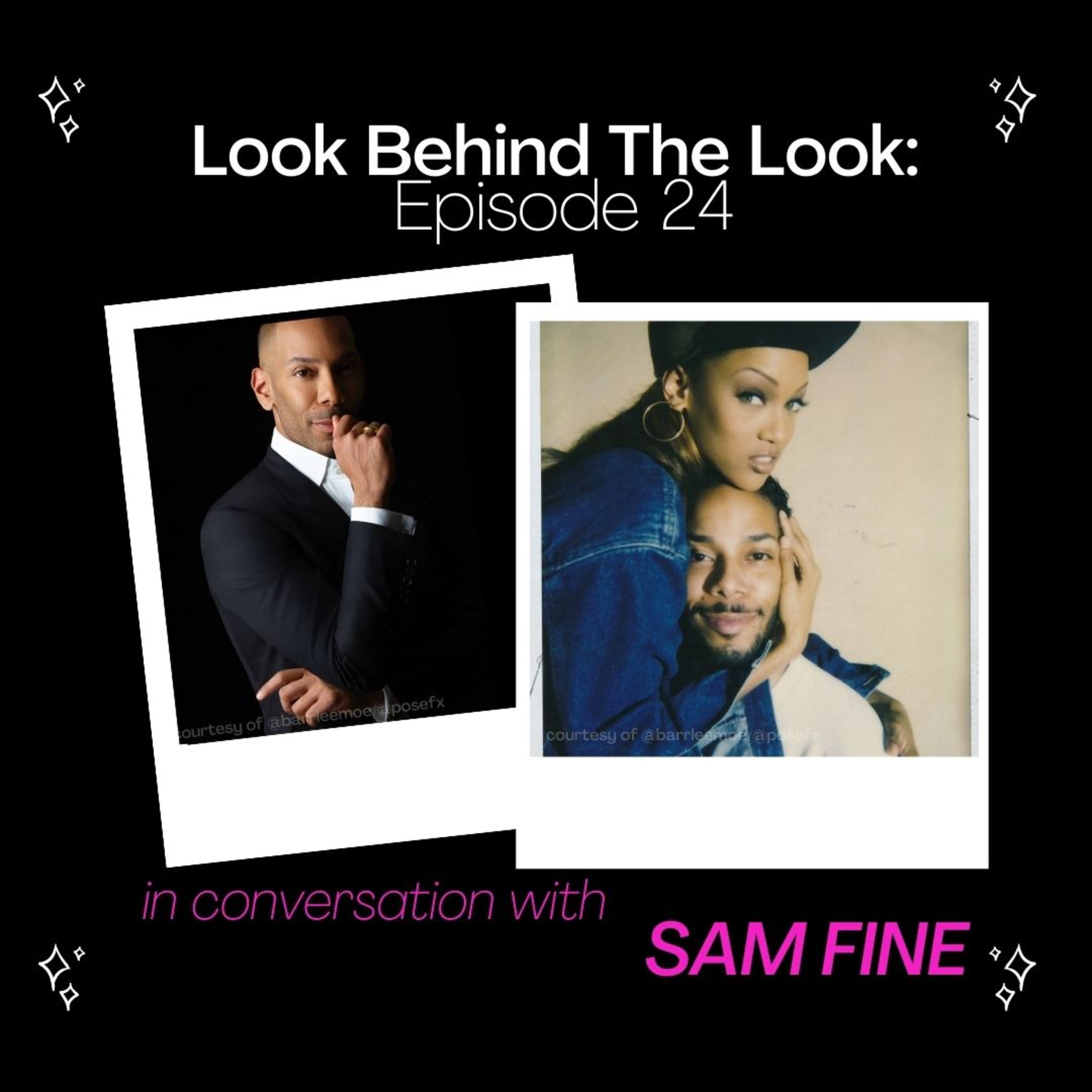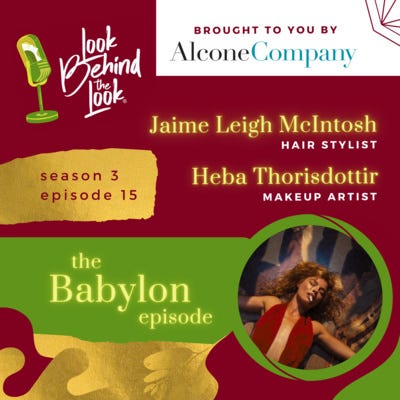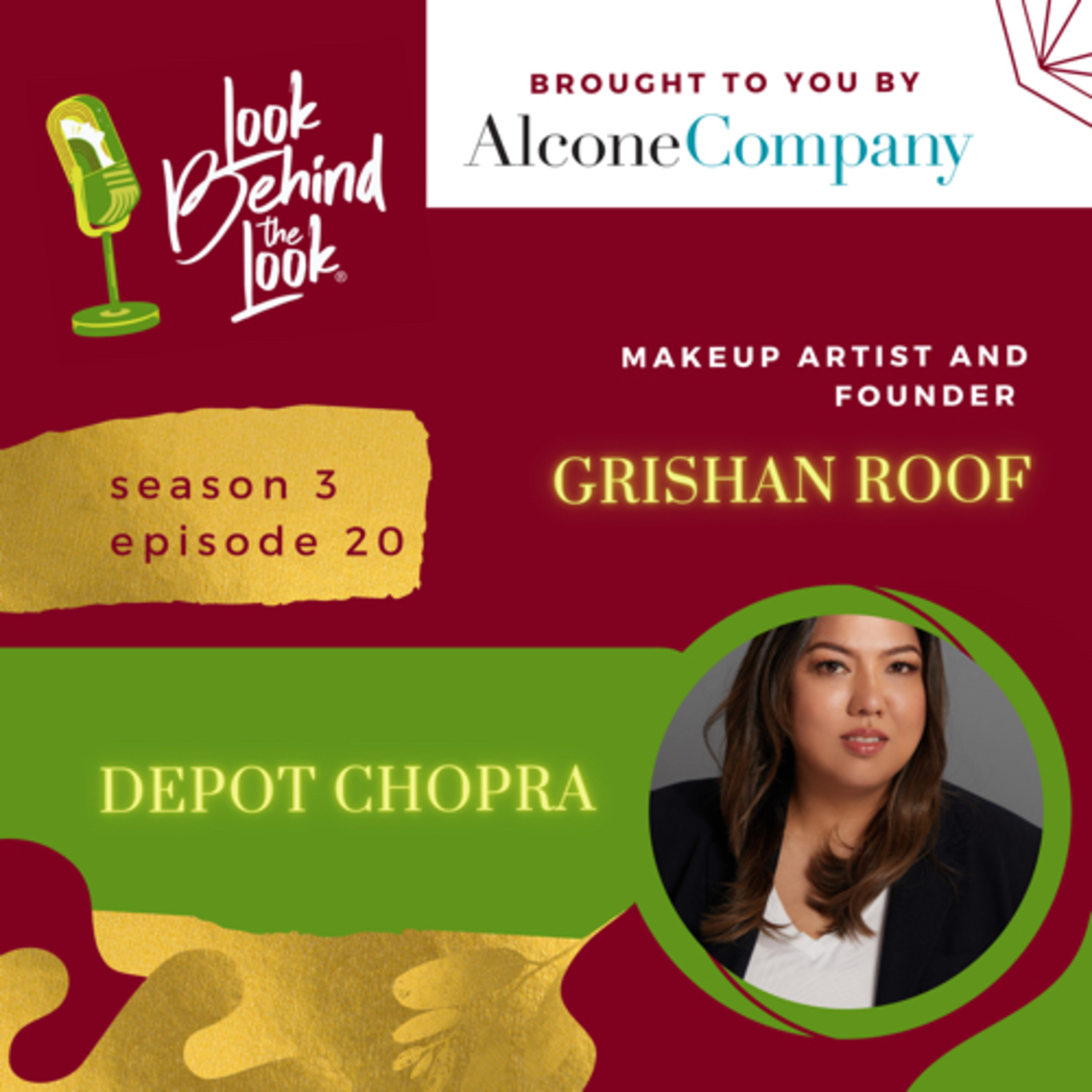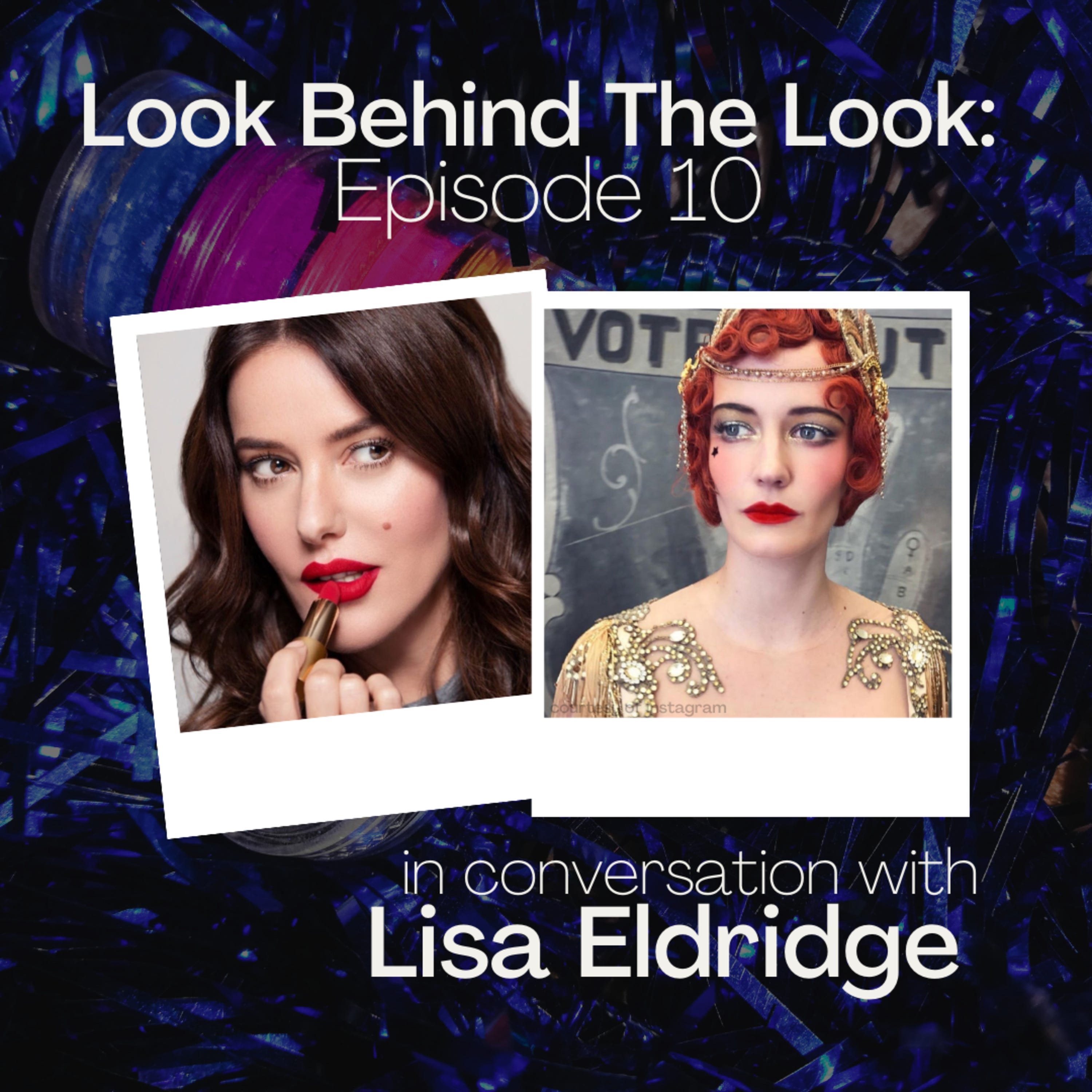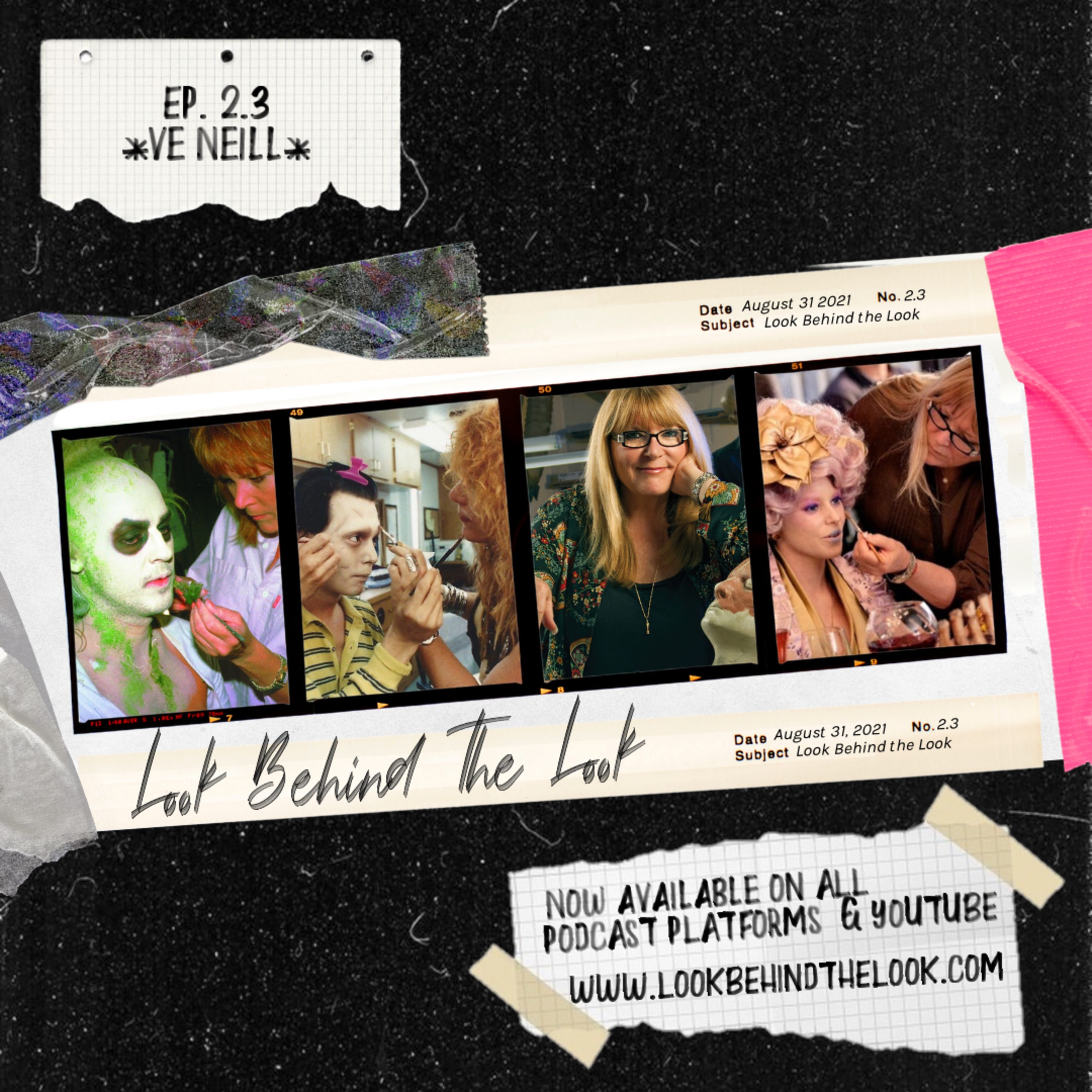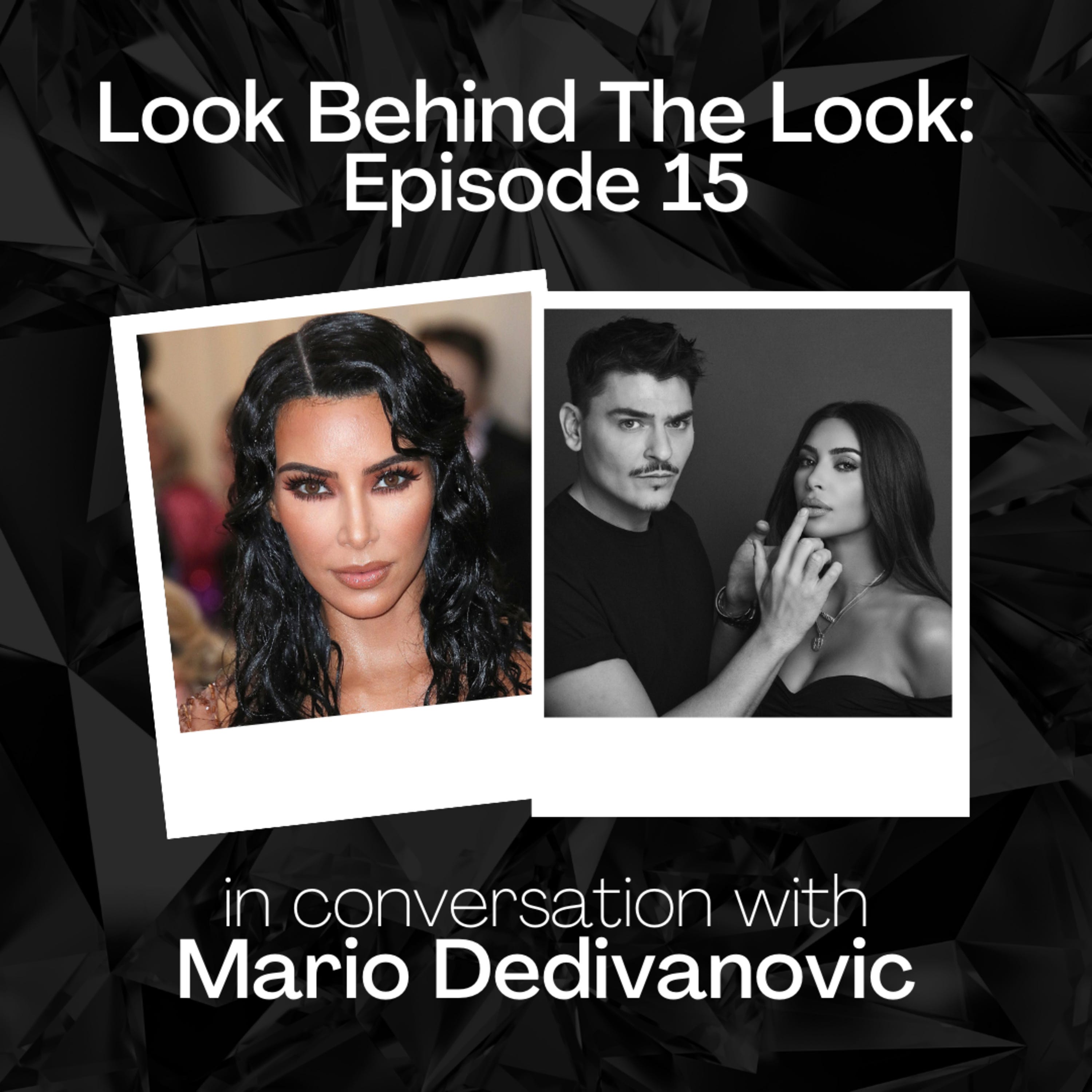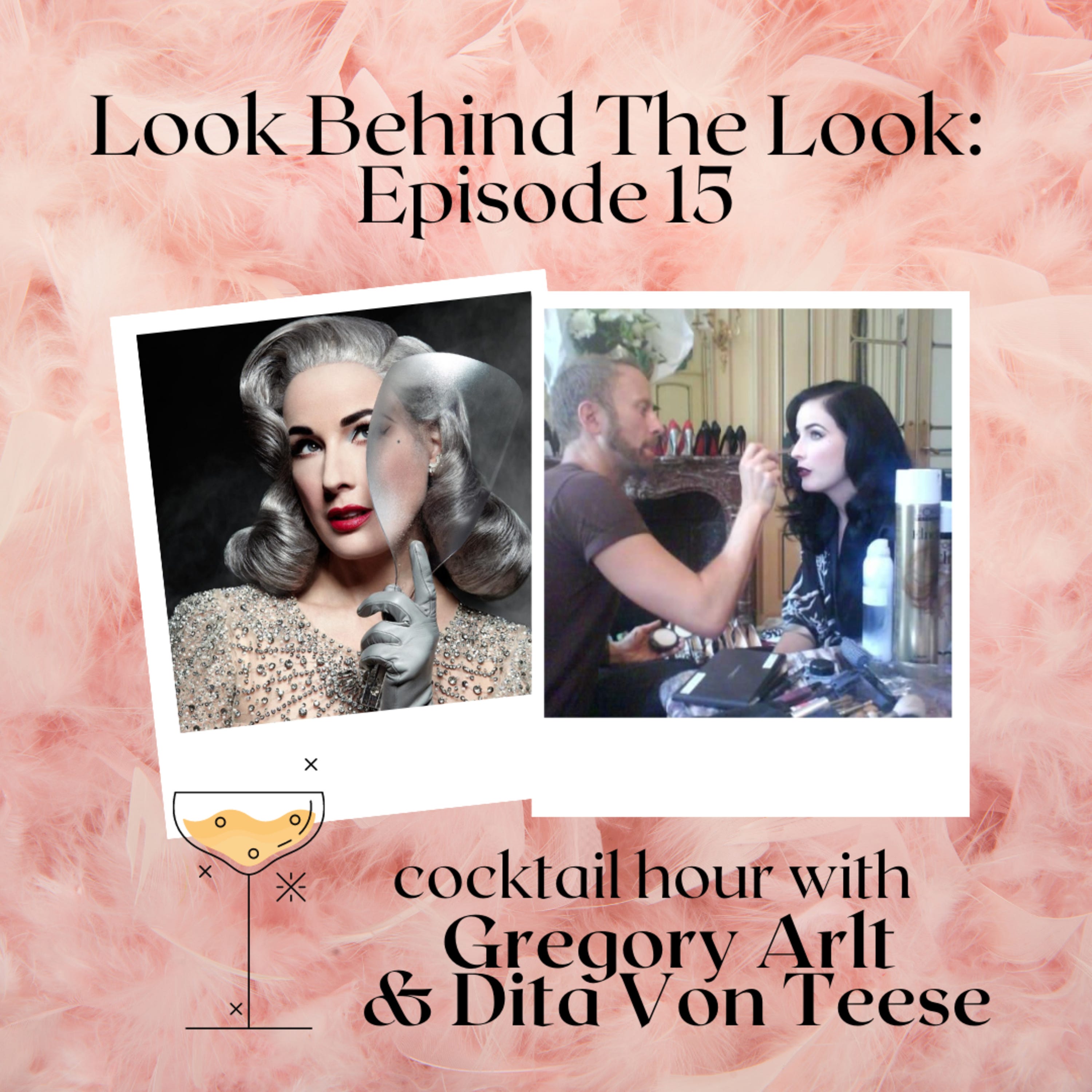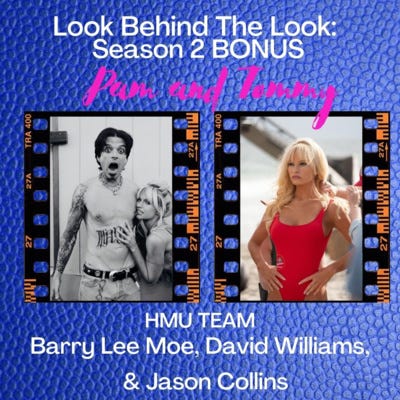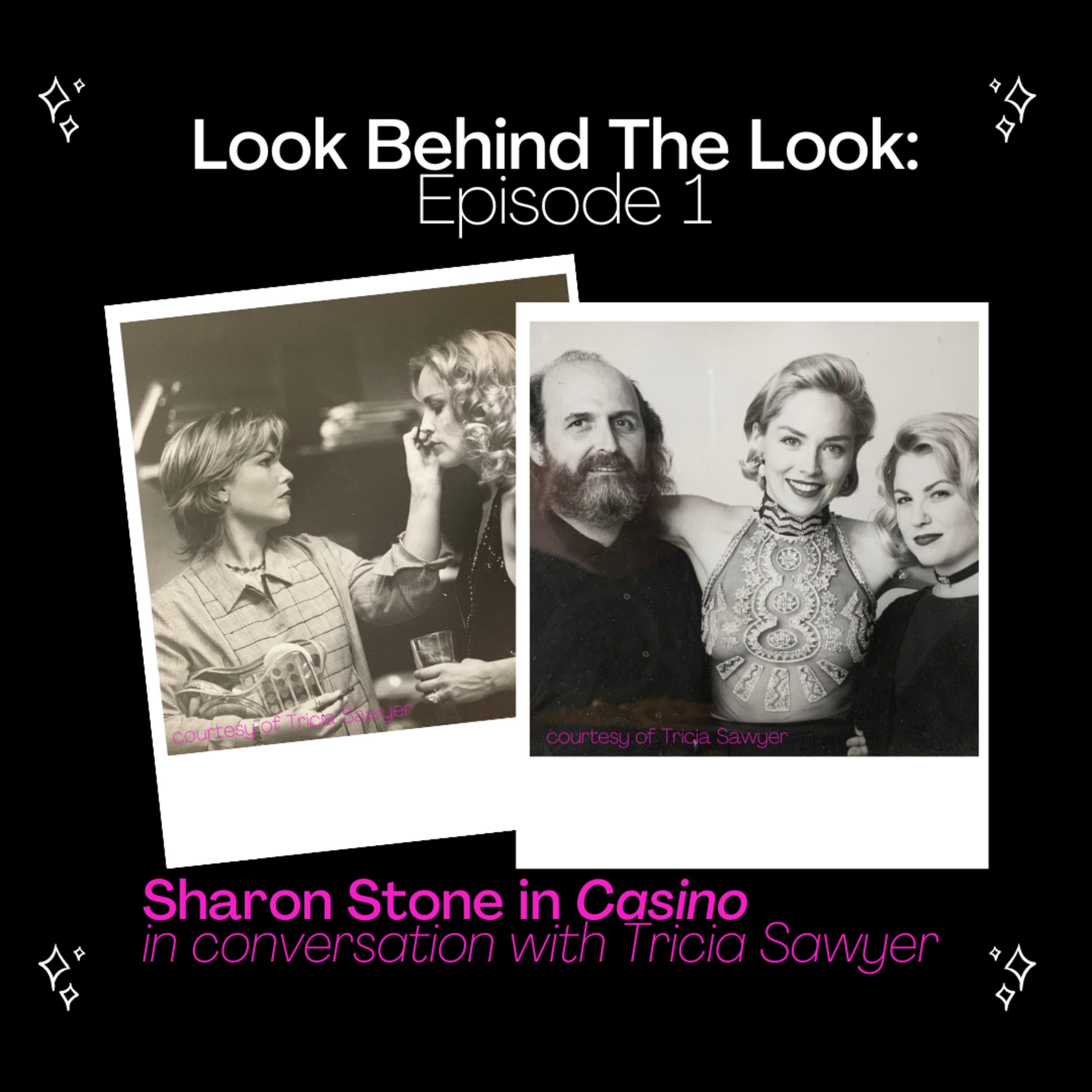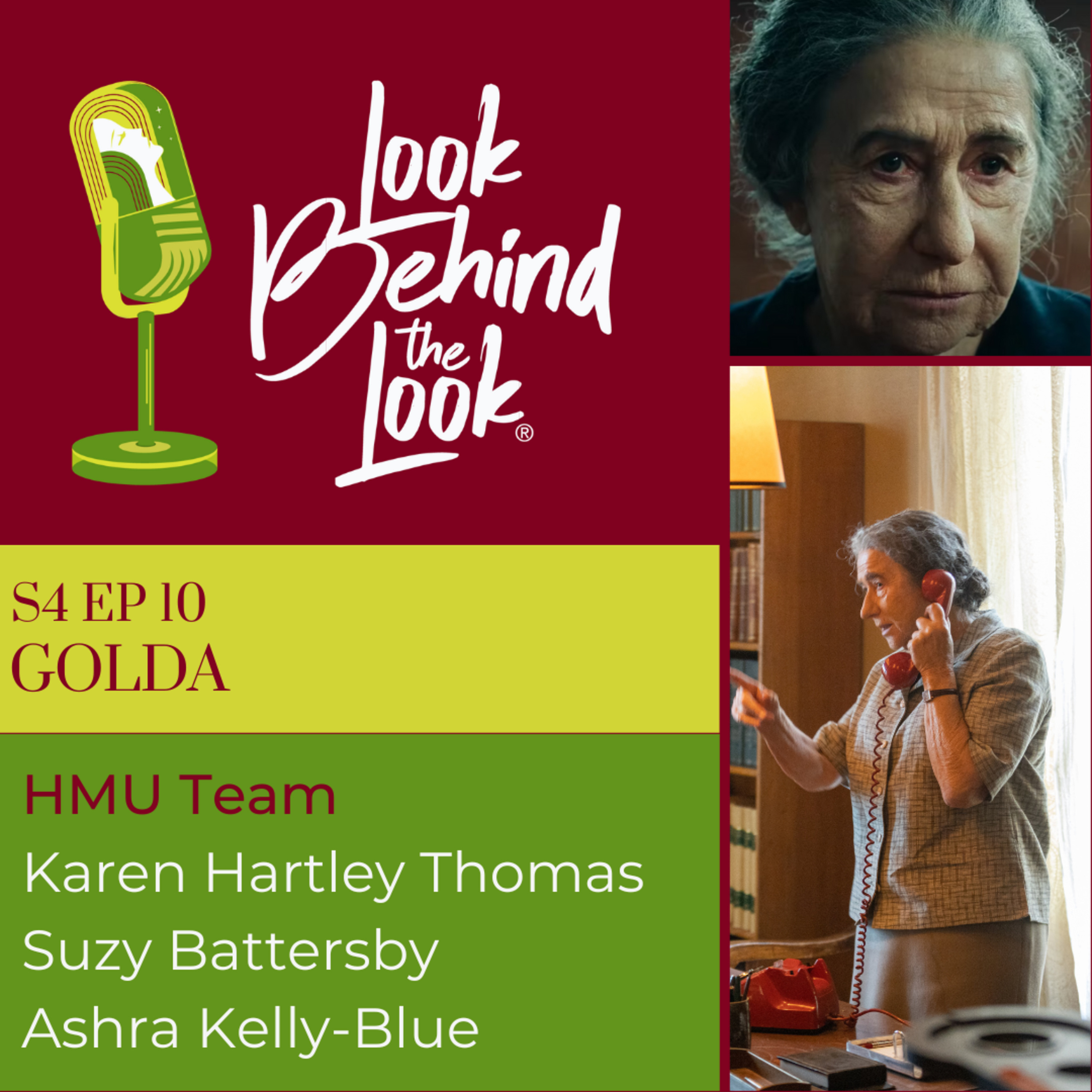
S4 | Ep. 10: Golda - Makeup and Hair Designer Karen Hartley Thomas, Prosthetics Designer Suzi Battersby, and Prosthetic Makeup Artist Ashra Kelly-Blue on their Oscar-nominated work.

Today's episode celebrates the Oscar Nominated work of Makeup and Hair Designer Karen Hartley Thomas, Prosthetics Designer Suzi
Battersby, and Prosthetic Makeup Artist Ashra Kelly-Blue on the film GOLDA. These women share with me the process
involved to transform the acting force Helen Mirren into Israeli Prime Minister Golda Meir. These women, who had never worked together before came together to create this award worthy transformation and now share with me exactly how they did it. Enjoy!
Watch GOLDA Here:
https://paramountplus.qflm.net/k0X4LV
Get full access to Look Behind The Look's Substack from Tiffany Bartok at lookbehindthelook.substack.com/subscribe
Look behind the look interviews award-winning hair, makeup and costume designers
>> Speaker A: Welcome to look behind the look, the celebrated podcast that explores your favorite looks in film, television and fashion history through conversations with the fashion world's elite and award winning hair, makeup and costume designers on sets around the world. You will see and hear exciting tales from behind the scenes career, origin story, and tons of advice and tips. I'm your host, Tiffany Bartok. Hey, everybody. Welcome to look behind the look. We are again talking about Oscar nominees. This time we're talking to the team behind the film Golda. They are responsible for the transformation of Helen Mirren M into the israeli prime minister Golda Mair in the film Golda. The film Golda is on Paramount right now. If you want to check it out, I highly recommend taking a look at these women's work. It is truly extraordinary work. We're speaking to Karen Hartley Thomas, who is the makeup and hair designer. She has previously been nominated throughout her career. In 2009, she was nominated for both a BAFTRa and an Emmy for her makeup and hair design on Little Dorett, which was a BBC production. And the following year, she received another Emmy nomination for Cranford, which was starring, Judy Dench and Imelda Stouton. And in 2011, Hartley Thomas was nominated for a BAFTA award for her work on Michael Samuel's miniseries Any Human Heart. Susie Battersby is the prosthetics designer and she trained at London College of Fashion, graduating with the first class honors in technical effects for performance and furthered her sculpting skills, completing courses at the London Artillier of representational Art and the sculpture school. She's recently been designing prosthetics for sex education season three and inside number nine, series six. And we're speaking to Ashra Kelly, blue, prosthetics makeup artist, and she's been credited on projects such as you, willow, and greatest days. And now Golda. So they're going to get into their process and all that happened on set, and I hope you enjoy our conversation.
>> Speaker B: Thank you so much for joining me, all of you.
This is very exciting because you are in the award circuit
This is very exciting because you are in the award circuit and I'm sure that is exciting and nerve wracking. I always like to ask how people are feeling about the whole situation. How do you all feel?
>> Speaker B: Susie.
>> Speaker D: Susie? Yeah.
>> Speaker C: To be honest, still in shock.
>> Speaker B: Really?
>> Speaker C: Yeah. Honestly, I think things like this make it feel more and more real, but I honestly don't think I'm really going to feel like it's true until we're on that red carpet.
>> Speaker B: Yeah. So this was not one of those movies where you were like let's get our Oscar. Let's get our BAFTA. This was just a true putting together of an iconic woman.
Michelle Golda was offered the role of Golda by Hugh Jackman
Okay, so how did Golda all come together? How did the team come together? First, can you tell me how you all have you all worked together? What was the process of, the team?
>> Speaker D: No, I met guy and was offered the job.
>> Speaker B: Okay.
>> Speaker D: I always say guy had no option in giving me that job. It's a job of dreams. When you read a script like that and think, yes, I've got to have this job. And I was very busy on a film. I was, working with Hugh Jackman, and they sort of gave me options of time. You can have nine till 930 or six till 630. And I looked and thought, six or 630? That's the dinner, Hugh. You can't have any checks until 635. So I'm on a zoom with guy, and he didn't have any option. As I said, I really just desperately wanted to do the job. I'd worked with Helen before. I did a film called the Duke with her.
>> Speaker B: Okay, Michelle.
>> Speaker D: The Duke, which I loved doing, and I really liked Helen so much. So I got the job and then immediately realized, well, we've got six weeks to turn this around. And it was actually six weeks later that we were shooting.
>> Speaker B: No.
>> Speaker D: Yeah. So the euphoria of being off with the job, and then it sunk in, and I thought, hang on a minute, because you just don't want to do something like that badly. You just really don't.
>> Speaker B: It's a lot of pressure.
>> Speaker D: Turn this into a job of nightmares if you look at it. So I went home and had a think about it, and then I sort of started to ring round and get people on the team. So I sort of phoned up Alex Rouse, who always makes Helen's wigs, and said, can you get me a wig in four weeks? She said, no, I really can't. I'm so busy.
>> Speaker B: Oh, wow.
>> Speaker D: And I said three little words. Dame Helen Mirren. And I think she really wanted to shoot me because I think she's made Helen's, I don't know, 20 years, something like that. no, she couldn't say no to me. That was the beauty of it. When those three little words come out, not many people say no. So we started on that. I then bowed up about eyebrows. I got in touch with Susie. It's a massive big ask as well. Eyebrows, all of it.
>> Speaker B: Our eyebrows were the first thing that you thought of that we had to nail.
>> Speaker D: Well, it was the wig and the eyebrows.
>> Speaker B: The wig and the eyebrows.
>> Speaker D: Spoken to Helen, sinead kadam, the cushion myself. We had a zoom with Helen to talk about it all because Helen was in Los Angeles and she was going off on holiday. And I thought, I don't really know how we're going to achieve it. And guy, the director, was adamant, we have to have prosthetics.
>> Speaker B: Okay.
>> Speaker D: So I said to have to get you in this weekend before you go. you know, she's never had a transformative makeup like that before, ever. No, she's never had a prosthetic makeup. So she was reluctant. I think she had, in her mind it would be a full face of prosthetics wouldn't move. That's people's perception of it. So I said, look, let's just, what about just the wig and eyebrows? I said, well, we'll get all that done, the contact lenses and stuff, but let's get, a scan done of you before you go away, and we'll make the prosthetics. If you don't like it, we'll do everything, in a month. And if you don't like it, we don't use it. If we use some of it, then let's just give ourselves sort of every option.
>> Speaker B: Right?
>> Speaker D: So that's what we did. She went in, literally, I think, the next day and had the scan done that got sent over to Susie.
>> Speaker B: Where are you all located?
>> Speaker D: We're totally different. Okay. We've never worked together before.
>> Speaker B: None of it can be easy.
>> Speaker D: None of it, no, none of it's easy. It's the logistics. And we were fortunate because we haven't worked together before, Susie and I, that we did come together so well with everything, because when all components are being done all over the place, and they were, they have to know. I was going around to local opticians, trying out the best brow contact lenses, because madly, that is one of the most difficult things they could know. So all those components had to come together on a test a week before shooting. And Susie, and I just luckily came up with sort of sympathetic stuff, both that came together, so know it was exciting, but also sure, I'm sure, terrifying.
Karen and Susie came together on iconic Keller Miram look
>> Speaker B: And Karen and Susie, how did you come together? You'd heard of each other, obviously, and it all worked out okay.
>> Speaker D: I'll tell you. Tell me. I don't think we did know it well. I mean, did you know of. Yeah.
>> Speaker C: Ah, I heard your name. We never worked together.
>> Speaker D: No, we'd never worked together. And I got my daughter, we were talking and I needed somebody to do it. And, you know, it's a thing that people possibly might not have wanted to do that kind of look.
>> Speaker B: Sure.
>> Speaker D: I was talking to my daughter, who was 20, and she's a great one for the googling. And she had a look and she said, I like the sound of this company, mum. And I think they're all women. I think you are all women. So she said, try her. This was it. I mean, this is how things are.
>> Speaker B: Karen's daughter, Susie, Karen's daughter.
>> Speaker D: You can buy her a glass of champagne in Los Angeles, Susie. And then I sewed up Sunita, who was our friend, and said, do you know Susie? And she said, yeah, give her a go, she's very good. And I looked up what Susie had done, which Susie told me m she'd looked up what I'd done as well. A little look on IMDb. so it was like that really. I mean, we worked together on project subsequently to that.
>> Speaker B: yeah, because you two have worked together since then. Since we have. I almost said the queen. I mean, Golda. Yes.
>> Speaker D: Not been out yet. but yeah, we were fortunate and we all worked very well together.
>> Speaker B: Fantastic.
>> Speaker D: And achieved that in such a short space of time. But it's a very daunting thing because honestly, the truth is I did go home that night and think, I'm not actually sure because, you sit and wait for people to comment on your work. Oh yeah, it's iconic Keller Miram thing. Iconic golden my ah, ear. And you know that it's immediately going to get a loss of coverage, don't you?
>> Speaker B: The microscope is out.
>> Speaker D: Famous woman, right?
>> Speaker B: Exactly. An icon sandwich.
>> Speaker D: Yes, it's so true. You know that. And expectations are always high. And I always say we're not scientists, we have to come up with it and then repeat it every day. That's what, the same every day.
>> Speaker B: That's what I really notice.
>> Speaker D: That is such a thing in our job, in, any job you do, any film you do.
Ashra came onto the project through Susie
>> Speaker B: Ashra, how did you come onto the project? Did you come through Susie?
>> Speaker C: I did, yeah.
>> Speaker E: So me and Susie have been working together for about three years now.
>> Speaker B: Okay?
>> Speaker E: She's actually the person who gave me a foot in the door of prosthetics, and took a chance with me when I didn't really have much in my.
>> Speaker B: So why did you take a chance, Susie? Why did you take a chance on Ashra? What did you.
>> Speaker C: Think? I don't know. You can get a sense from somebody when you meet them. I think whether you're going to work well together, for starters. So when I first met in person, I knew that we would get along very well. And also, we're actually very different as artists. We complement each other incredibly well. But her portfolio was so strong for somebody who had not actually been working for that many years to be, wow. Her eye for detail is just second to none, in my opinion. and just a really natural eye for color and understanding makeup, to be honest. And she had done some prosthetics. M so when she first worked for me, which was for a different film, where we were doing some kind of swellings and stuff like that, and it was post Covid, so the workload in the industry was quite crazy at that time.
>> Speaker D: Yes.
>> Speaker C: and, I couldn't go away on the shoot. Basically, I was meant to, and I couldn't because I had to be back in the workshop managing my other films and tv shows. And I threw Asher right in the deep end, and she swam like crazy and did a beautiful job. And I knew. I was like, right, this one's special because she didn't run away. She did an incredible job. And, every time I gave her a challenge, she just rose the occasion. So when gold Ashford had basically stuck with me for what, like, maybe, yeah, three or four months by that point, maybe. so when golder came around and, I needed somebody to apply it with me, didn't I? I sort of said to you in the workshop, can we have a chat?
>> Speaker E: Yeah. We hadn't even had our, first coffee, and immediately she was like, I'm going to have to have you apply it with me.
>> Speaker D: Oh, my gosh.
>> Speaker B: were you nervous?
>> Speaker C: I was.
>> Speaker E: It's a funny one because me and Susie, thankfully, we've actually done quite a few applications together. I'm left handed. She's right handed.
>> Speaker B: Oh, my God, that's pretty.
>> Speaker D: That works.
>> Speaker E: I'm also very tall, and she's very small, and so we can just move around with each other. And I don't know, there's this weird, sick sense that we have where it's just like if she's working on something, I can.
>> Speaker B: It's very synchronized. Synchronized? Wow. Well, that's meant to be for sure. What were you going to say, Susie? I interrupted you. I'm sorry.
>> Speaker C: Well, I was going to. No, it's just funny because obviously, when you put your actor in the chair, obviously you don't want to be kind of being too chatty and busy anyway. But I think because it was around Covid, we were still wearing masks and stuff. The amount of communication Ashra and I had to have just with our eyes was, honestly, it kind of sounds a bit mad, but we really had to rely on that synchronicity, because otherwise, when we hit the ground running with this application for golder, Ashra wasn't even actually at, the camera test that I did. I did that on my own, establishing it. So, Asher, I knew from previous jobs that Ashra is very, very good at picking up exactly the same colors. I'm using exactly the same technique. So she was basically just mirroring what I was doing on the other side.
>> Speaker B: Oh, my goodness.
>> Speaker C: So quickly. She was obviously the right person for the job.
>> Speaker B: What a beautiful dance.
What I noticed in this so much was the impeccable matching
What I noticed in this so much was the impeccable matching, and it was just seamless, and everything looked exactly the same. How did you do?
>> Speaker C: have, uh-huh.
>> Speaker B: To.
>> Speaker C: Well, there's actually quite a few people to sort of point out. Okay, so first, Van Dyke effects. They're based in LA, and they actually did the scan and 3d print of Helen for us in la, because, like Karen had mentioned, none of us got a chance to actually see Helen in person until the camera test. Oh, my God. So we were working off really amazing photographs from them that they took, obviously, this incredible 3d print, but they also made a great color match for us as well. just for the basic kind of color to expect with her skin. So with using that, firstly, it meant that when we ran our pieces, like one of the painters I had, nikki Dejong, she established the paint system we were going to do, and she did an impeccable job, didn't she? Because she basically matched it so well, giving us that lovely extra little bit of wiggle room for us just to add as you create that seamless blend, because the thing with the pieces we were doing, because we didn't want to overwhelm Helen's face, a lot of our pieces are, ah, kind of finishing halfway over her face. So, like, the cheeks, for example, they're not full cheeks. The edges are kind of somewhere in the middle of her face, her neck halfway across. So Asher and I had nowhere to hide. So, aside from the color, a big thing that helped us is a technical thing with our pieces, one of them being that we made sure that we got the team to run the pieces with exceptionally thin cap plastic. And that's the plastic that encapsulate your prosthetic. So that gives you, and you can run them thicker, thinner. and I was asking the team to go as thin as they dare. Anything that's too thick is really going to show up on camera. And the other thing that's really special about the makeup we did is that we were actually r and d ing how soft we could make the silicone because you can actually tweak the softness. And, because Helen is in her seventy s, and as was golder, we wanted that lovely, soft feel to the skin. In a woman of that age. It did mean that we were running our pieces at an exceptionally high percentage with a product called deadner.
>> Speaker B: Okay.
>> Speaker C: So typically, most people run them at sort of 200. Some people push them to 220. We were pushing ours to 300, which meant this got so softly soft.
>> Speaker B: I see.
>> Speaker C: Feel. So that coupled with the coloring, all of that just means that we got, I'm glad you can see that. And it was really important. A natural.
>> Speaker B: Absolutely.
>> Speaker C: Absolutely.
How did Helen deal with the water in this film
>> Speaker B: Now, how did it work with the water? Because when she's splashing so much and taking these baths with Camille Cotton, who's my favorite actress by the. So I'm just waiting for her Oscar turn. But, I was like, how are they dealing with this bathtub and this water? How did you deal with it? did you cry?
>> Speaker C: Well, I was nervous, by the way, today. How is that going to be? So we just had to make sure it was really well sealed without overdoing. of course. but the thing is, I'm always just a bit like, do you know what? Go for it. Because I feel like when an actor feels like they can't, truly perform like it belongs to them, it really gives the game away. I knew it could hold up anything that we had applied. I knew that if after a couple of takes, I could always touch stuff up. But I said to them, don't hold back if you need to, just as you would your own face. The thing, to be fair, she was very careful, with which I was very grateful, is when she's sort of drying with her. she was very good. I did tell, I was like, please, pat, rather than rub well.
>> Speaker B: And that works, right? Because that's what we do anyway. And her skin is probably so sensitive and delicate as an older woman, so that would make sense character wise.
>> Speaker D: So that's.
>> Speaker C: Thank God, I think also, the other.
>> Speaker E: Thing was that, when Helen was in the chair and we were applying the makeup.
>> Speaker E: Once everything was on, she would stress test, like, move as much as she possibly could just to really get a feel of what she could emote. And I think what was so lovely is that because the pieces were so soft, there wasn't anything that was stopping her from doing her job as well as she did. Because there was no hindrance, basically. And I think that alongside Susie obviously, being like, go for it. Splash your face as much as you want. but also, when she's emoting, there's no part of us being like, oh, don't do that. It's just like, do what you can. I think it was wonderful to watch her just really become.
>> Speaker B: Yes. Yes. That must have been amazing to watch. How long was the process every day?
>> Speaker E: we had 2 hours.
>> Speaker B: Oh, my.
>> Speaker E: And then, Karen and Annette, would apply the wig, and they had.
>> Speaker C: Half an hour for that.
>> Speaker B: Oh, my God. Oh, my God. Oh, I had no idea. And then how many days did you shoot?
>> Speaker C: So 30 days. It was six week. Shoot five days a week. And Karen. Sorry. Helen rather. Helen was in every single scene. I mean, as you know, is in the entire film. So she didn't have a day off. Oh, my God. Yeah, it was pretty relentless.
>> Speaker B: Wow, that's amazing.
Liev had a beautiful wig made for Henry kissinger
And can you tell me a little bit about Liev, becoming Henry kissinger? how did you approach that?
>> Speaker C: Well, to be honest, that's something that Karen, should answer because Lieb didn't have, any prosthetics for that. So, I know he had a beautiful wig made. There's a great story behind that because, again, Karen just, she moved heaven and earth to get that wig together. Really?
>> Speaker D: Wow.
>> Speaker B: Karen's probably having a complete anxiety attack right now because she can't get in, back into the room. So the second that she gets back on this link, we will ask her about.
>> Speaker C: She's got some great things to say about that. That was a really successful makeup and hair on that. It was beautiful.
>> Speaker B: Oh, wow. Yes. I imagine that that was quite a challenge.
Most days felt like groundhog day for you on set on Helen
was there anything that was like, any day that was particularly challenging to you, or was it just like once you got into a routine, this was kind of groundhog day for you? Was there any fluctuation or like, tomorrow's the day? Tomorrow is the thing that we're going to stay up all night worrying about.
>> Speaker C: to be honest, most days did just feel like that. I mean, it was so stressful.
>> Speaker B: Oh, was it? Yeah.
>> Speaker C: Because, as we know, because it was on, you know, national treasure, both here in the UK and in the States, I would know. Everybody loves Helen. She's one of the best actors of a generation. And playing an iconic woman, so the pressure was always so high. but I think Karen would probably say this one of the days that really stood out was when we had our first major close up, because there are quite a few very shots of her eyes, mouth, around her nose, everything. And, yeah, so the first time that happened, me and Karen were on set and we both, I think, just grabbed each other's hands and thought, oh.
>> Speaker D: My God, what's happening?
>> Speaker C: Especially because it happened in the afternoon, about an hour before wrap, and that's not the time to do a close.
>> Speaker B: That's so funny.
>> Speaker C: But the thing is, to our delight and our surprise, we were scanning the monitors, looking for problems and we couldn't see. Karen got these, contact lenses sorted, which, again, looked, they looked fantastic.
>> Speaker D: Sorry, I'm back.
>> Speaker B: Yes, don't apologize.
>> Speaker D: My gosh, that's a stressful thing, isn't it?
Liev was a similar thing with Helen. We weren't 100% certain it was gonna be liev
>> Speaker B: speaking of stressful things.
>> Speaker D: I've got to be up at 05:00 a.m.. Yes. Liev was a similar thing with Helen. We weren't 100% certain it was going to be liev. So while the deal was being done, I thought, right, here we go. A bit like the Helen situation. Have to go for it. I got in touch with Campbell young in New York, and I just got into semi over Liev's shape and I started the wig already. So by the time he stepped off the plane, I had a wig for him, having not seen him, and I think again, three days later, he was shooting. But that was, again, a thing of the research. We've had so much help with research with Helen. It was Golder's family that massively helped us.
>> Speaker B: Oh, really?
>> Speaker D: Oh, massively helped. The fact that Golder had a manicure every week with clear nail varnish. She had nicotine fingers. The texture of her hair, the length of her hair, how she washed it and left it and it went into curls. She'd kind of plat it at the nate and get it into a chin yard. We knew so much about her and we had a lot of info on, obviously, on Henry Kissinger and a massive amount of footage for both of them. That was the case. We were as a film, as a creative team, the production designer, myself, costume and dop. Lots of collaboration in the beginning about the look, because you have to do Sinead Cadal, the costume designer, who's wonderful. so, yes, it was like that with lie, but we permed it. We put mohair in. I mean, it's just a creation. Should we put it like, wow. Wow.
Golder's grandson told us that she had nicotine fingers on her fingers
>> Speaker B: Now, you mentioned nicotine fingers, my friend. I asked her if she had anything that she wanted me to ask you because she just watched this last night and she, was asking about the hands and she thought it was blood and symbolic, but, it was nicotine fingers, I assume, because you just brought that up and that's.
>> Speaker D: It was nicotine, but just on the inside of her fingers. But again, that was Golder's grandson, who told us that she had nicotine fingers. You can see, isn't it?
>> Speaker B: What an amazing detail.
>> Speaker D: Changed my finger. Well, they were amazing because they really did support Helen. They were very keen for Helen to play their grandma. And guy told us that when they had a screening, and showed it to the family that they left and said, that was our grandma.
>> Speaker C: We've just seen our grandma.
>> Speaker B: What a comp. I mean, you don't need an Oscar. I mean, I'm not going to put that in the universe. Wow, that's like the ultimate award, right? That's amazing.
>> Speaker D: Well, that was amazing to hear, of course, because it's a strange thing, isn't it? Seeing a family member up there on the big screen and somebody else playing her. But of course you're going to get one of the world's best actors in Helen Mirren. You're on a winner to start with, aren't you?
>> Speaker B: Know, it's so funny, we're redoing, our shelves and we found our white knights, dvd and played it three times in a row. And every time Helen Mirren comes, like, we just stop whatever we're doing and just like that's. Know, it's so funny how when I was watching, like, I can still see her in know, but it's like an ultimate transformation in every way. But there's just that spark in there that you can see that beautiful woman just in there.
>> Speaker D: The. That's it. And Susie must have said that in my absence, that that's what we wanted to it the essence of golder, but not hide Helen. And Helen was obviously keen for that as well.
>> Speaker B: Yes, her eyes were super.
>> Speaker D: you know, she's one of the best actors in the world, isn't she?
>> Speaker C: Helen?
>> Speaker D: And a consummate. You know, you're halfway there with Helen. Why would you want to.
>> Speaker B: Oh my gosh. Ladies, is there anything you wanted to share with me? Ah, at all. We're sort of at the end of our time, but I lost you, Karen, for that time. So I wanted to make sure that, you told me all the good bits that you want.
>> Speaker D: I can't remember what I did say, running around this sort of, moroccan hotel.
Are you working on something right now? Yes. You can't tell me what it is
>> Speaker B: Oh, you're in Morocco?
>> Speaker D: Yeah, I'm in Morocco.
>> Speaker B: Oh, my gosh.
>> Speaker C: How exciting.
>> Speaker B: Are you working on something right now?
>> Speaker D: Yes.
>> Speaker A: You can't tell me what it is?
>> Speaker D: No, it's not been announced. You will know about it. But I didn't know it was top secret.
>> Speaker B: You're like now. I do now because I was told that it was up.
>> Speaker D: Yeah.
>> Speaker B: Wonderful. Well, I'm really rooting for you ladies. You are all amazing. And it's been amazing talking to you and hearing about all the incredible detail you put into this beautiful work. And congratulations to you all.
>> Speaker D: Thank you so much.
Look behind the look is a vinyl foot production written by Tiffany Bartok
>> Speaker B: We'll talk to you for the next one.
>> Speaker A: Look behind the look is a vinyl foot production written by me, your host, Tiffany Bartok, produced by Jace Bartok and edited by Nicole Tucker. If you're interested in learning more, find our video version on the YouTube channel look behind the look podcast. There you can see rare photos and clips from our guests. And please follow us on Twitter at look behind Pod and Instagram at look behind the look. If you like the show, please rate, review and subscribe and tell your friends and spread the word. You can subscribe to us on iTunes or any podcaster of your choice. Thanks for listening. To look behind the look.

Suzi Battersby
Prosthetics Designer
Suzi is a multi-skilled prosthetics designer and technician who has worked across film, TV and theatre for 10 years. She is the founder and lead creative at Red Girl, an innovative prosthetic makeup effects studio in North West London. She is based in London and works in many countries around the world.
Suzi trained at London College of Fashion graduating with First Class honours in BA (Hons) Technical Effects for Performance, and furthered her sculpting skills completing courses at the London Atelier of Representational Art and The Sculpture School. From early in her career, she has worked for some of Europe's leading effects companies across all specialisms within prosthetics and creature effects setting herself apart as a particularly accomplished and versatile artist. Through extensive self-study and technical development at her own company, Suzi continues to perfect and further advance industry processes and materials.
Over the years, Suzi has been a part of BAFTA winning and Oscar and Emmy award nominated teams, and has made prosthetics for actors including Gillian Anderson, Jared Leto, Timothy Spall, Geoffrey Rush, Michael Fassbender, Matt Smith, and Rebecca Ferguson. Her work can be seen on such films as Ridley Scott's “Alien: Covenant” and J.J. Abrams' “Star Wars Episode VII: The Force Awakens” as well as on TV productions including “Holby City” and “Doctor Who” for the BBC, and National Geographic's biopic drama series “Genius.”
Working across a variety of productions in key roles has gi… Read More

Karen Hartley Thomas
Hair and Makeup Designer
Karen Hartley Thomas (Makeup and Hair Designer) has received various award nominations throughout her career. In 2009 she was nominated for both a BAFTA and an Emmy for her makeup and hair design on the BBC’s “Little Dorrit,” and the following year she received another Emmy nomination for Simon Curtis’ “Cranford,” starring Judi Dench and Imelda Staunton. In 2011 Hartley Thomas was nominated for a BAFTA Award for her work on Michael Samuels’ miniseries “Any Human Heart,” featuring a stellar cast including Jim Broadbent, Hayley Atwell, Matthew Macfadyen and Gillian Anderson.
In 2021 Hartley Thomas designed Carrie Cracknell’s Persuasion and Florian Zeller’s The Son, with Hugh Jackman and Laura Dern. In 2022 she designed Coky Giedroyc’s Greatest Days, a musical featuring the songs of Take That; Matthew López’s Red, White & Royal Blue, starring Sarah Shahi and Uma Thurman; and James Hawes’ One Life, starring Anthony Hopkins and Helena Bonham Carter.
Hartley Thomas’ television credits include Tom Hooper’s “Longford,” with Jim Broadbent and Samantha Morton; Hugo Blick’s “The Shadow Line,” with Chiwetel Ejiofor; Roger Michell’s “The Lost Honour of Christopher Jefferies,” with Jason Watkins; Julian Farino’s “The Child in Time,” with Benedict Cumberbatch; and Edward Berger’s “Patrick Melrose,” also with Cumberbatch.
Hartley Thomas began her collaboration with director Dominic Cooke on “The Hollow Crown,” “Henry VI” and “Richard III” with Benedict Cumberbatch, Judi Dench and Sophie Okonedo. Next came the features On Chesil … Read More

Ashra Kelly-Blue
Ashra Kelly-Blue is a film and TV prosthetic makeup artist. Kelly-Blue has been credited on projects such as “You,” “Willow,” “Greatest Days,” and “Golda.”





















